#Nicholas black elk
Text
Black Elk, Nicholas (1863 - 1950)
Black Elk, also known as Nicholas Black Elk, was a prominent spiritual leader and medicine man of the Oglala Lakota Sioux tribe. Born in 1863, Black Elk lived through a period of immense cultural and political upheaval for Native American communities. His life and teachings offer valuable insights into the rich indigenous traditions and the devastating impact of colonization on Native American…
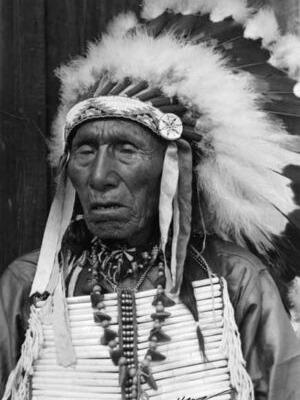
View On WordPress
5 notes
·
View notes
Text
"Black Elk Speaks," the story of the Oglala Lakota visionary and healer Nicholas Black Elk (1863-1950) and his people during momentous twilight years of the nineteenth century, offers readers much more than a precious glimpse of a vanished time. Black Elk's searing visions of the unity of humanity and Earth, conveyed by John G. Neihardt, have made this book a classic that crosses multiple genres. Whether appreciated as the poignant tale of a Lakota life, as a history of a Native nation, or as an enduring spiritual testament, Black Elk Speaks is unforgettable.
Black Elk met the distinguished poet, writer, and critic John G. Neihardt in 1930 on the Pine Ridge Reservation in South Dakota and asked Neihardt to share his story with the world. Neihardt understood and conveyed Black Elk's experiences in this powerful and inspirational message for all humankind.


#book: black elk speaks#author: john g. neihardt#author: black elk#genre: native american literature#genre: non fiction#genre: history
9 notes
·
View notes
Text

The First Peace - Nicholas Black Elk (Hehaka Sapa)
“The first peace, which is the most important, is that which comes within the souls of people when they realize their relationship, their oneness, with the universe and all its powers, and when they realize that at the center of the universe dwells Wakan-Tanka , and that this center is really everywhere, it is within each of us. This is the real peace, and the others are but reflections of this.
The second peace is that which is made between two individuals, and the third is that which is made between two nations.
But above all you should understand that there can never be peace between nations until there is known that true peace, which, as I have often said, is within the souls of men.”
Image: Diablo Lake, Washington
11 notes
·
View notes
Text
December Books
Here we are, the end of 2023. When I first got back into reading, I was not expecting to be so hyper-fixated on it. I was just looking for something to help with the brain fog and mental slump that I was struggling with.
Sweet, Sexy Heart - Melissa Foster ⭐⭐⭐⭐
King of Greed - Ana Huang ⭐⭐⭐⭐⭐
Serendipity - Carly Phillips ⭐⭐⭐⭐
Forever My Girl - Heidi McLaughlin ⭐⭐⭐⭐
Real - Katy Evans ⭐
Bratva Knight - T. J. Maguire ⭐⭐⭐⭐
If I Break - Portia Moore ⭐
Found by You - Victoria H. Smith ⭐⭐⭐
Always Been Mine - Victoria Paige ⭐⭐⭐⭐
Daughter of Smoke and Bone - Laini Taylor ⭐⭐⭐⭐⭐
Days of Blood and Starlight - Laini Taylor ⭐⭐⭐⭐⭐
Savage - Michelle St. James ⭐⭐⭐⭐
Quick Trick - Skye Jordan ⭐⭐⭐⭐
Captive - Jex Lane ⭐⭐⭐
Forged by Malice - Elizabeth Helen ⭐⭐⭐⭐⭐
Gold - Raven Kennedy ⭐⭐⭐⭐⭐
Where Good Girls Go to Die - Holly Renee ⭐⭐⭐
Baby Baby: Chicago - Victoria H. Smith ⭐⭐⭐⭐
The Risk - S. T. Abby ⭐⭐⭐⭐⭐
Sidetracked - S. T. Abby ⭐⭐⭐⭐⭐
Scarlet Angel - S. T. Abby ⭐⭐⭐⭐⭐
All the Lies - S. T. Abby ⭐⭐⭐⭐⭐
Paint It Red - S. T. Abby ⭐⭐⭐⭐⭐
Bought - Lauren Landish ⭐⭐⭐⭐
Keeping Lily - Izzy Sweet ⭐⭐⭐
Love and Other Words - Christina Lauren ⭐⭐⭐⭐⭐
Beautiful Revenge - Sienna Blake ⭐⭐⭐⭐⭐
Born, Darkly - Trisha Wolfe ⭐⭐⭐⭐
Beg, Borrow or Steal - Susie Tate ⭐⭐⭐
The Kiss Quotient - Helen Hoang ⭐⭐⭐⭐⭐
Breakaway - Heather M. Orgeron ⭐⭐⭐⭐
From Lukov with Love - ⭐️⭐️⭐️⭐️⭐️
The Sweetet Oblivion - Danielle Lori ⭐️⭐️⭐️⭐️
Hero - Lauren Rowe ⭐️⭐️
Wait With Me - Amy Daws ⭐️⭐️
Trick Play - Eden Finley ⭐️⭐️⭐️⭐️
His Sweetest Song - Victoria H. Smith ⭐️⭐️⭐️
Gent - Harloe Rae ⭐️⭐️⭐️⭐️
Taking It Easy - Erin Nicholas ⭐️⭐️⭐️
Chance - Louise Rose ⭐️
Beyond Repair - Susie Tate ⭐️⭐️⭐️⭐️⭐️
Pestilence - Laura Thalassa ⭐️⭐️⭐️⭐️⭐️
War - Laura Thalassa ⭐️⭐️⭐️⭐️⭐️
Famine - Laura Thalassa ⭐️⭐️⭐️⭐️⭐️
Death - Laura Thalassa ⭐️⭐️⭐️⭐️⭐️
The Marriage Effect - Karla Sorensen ⭐️⭐️⭐️⭐️
Hidden Miles - Claire Kingsley ⭐️⭐️⭐️⭐️⭐️
Let Me Burn - Carrie Elks ⭐️⭐️⭐️⭐️⭐️
Deep in the Pocket - Lainey Davis ⭐️⭐️
Secrets of the Sea Lord - Starla Night ⭐️⭐️⭐️
Hate to Love You - Jennifer Sucevic ⭐️⭐️⭐️⭐️⭐️
Going Down Easy - Carly Phillips ⭐️⭐️⭐️⭐️
Remember When - Judith McNaught ⭐️⭐️⭐️⭐️⭐️
One for My Enemy - Olivie Blake ⭐️⭐️⭐️⭐️⭐️
The Maddest Obsession - Danielle Lori ⭐️⭐️⭐️⭐️⭐️
Desperate Measures - Katie Robert ⭐️⭐️⭐️
A Serenade to the Elf Queen - Niro J. Halle ⭐️⭐️⭐️⭐️
Crow - Erin Trejo ⭐️⭐️
From Now Until Forever - Alexa Rivers ⭐️⭐️⭐️
Taking Meghan - Izzy Sweet ⭐️⭐️⭐️⭐️⭐️
Ruthless Vows - Rebecca Ross ⭐️⭐️⭐️⭐️⭐️
Breaker - Harloe Rae ⭐️⭐️⭐️
Silenced by Sin - Ashley Lane ⭐️⭐️⭐️⭐️
Wild for You - Kendall Ryan ⭐️⭐️⭐️⭐️⭐️
Haunted by Regret - Ashley Lane ⭐️⭐️⭐️⭐️
Hungry Like a Wolf - Jessica Lynch ⭐️⭐️⭐️⭐️
Phantom - Greer Rivers ⭐️⭐️⭐️⭐️⭐️
The Deal Breaker - Melissa McClone ⭐️⭐️⭐️
A Vampire Bewitched - L. E. Wilson ⭐️⭐️⭐️
Beautiful Savage - Caroline Peckham ⭐️⭐️⭐️⭐️⭐️
The Devil Wears Black - L. J. Shen ⭐️⭐️⭐️⭐️⭐️
71 total books read in December.
#book#booklr#books#book lover#book quotes#reading#quote#lit#literature#novel#December books#2023 tbr#tbrbooks
2 notes
·
View notes
Text
“Then I was standing on the highest mountain of them all,
and around and about me was the whole hoop of the world…
I was seeing in a sacred manner the shapes of all things in the
spirit and the shapes of all shapes as they must live together
like one being. And I saw that the Sacred Hoop of my people
was one of many hoops that made one circle, wide as daylight
and as starlight and in the centre grew one almighty
flowering tree to shelter all the children of one Mother
and one Father, and I saw that it was holy.”
-From the vision of Nicholas Black Elk Lakota Holy Man: 1863 - 1950
2 notes
·
View notes
Text
I was tagged by @homesick-evermore !! Which I apologize profusely about the late response — 🫶🏼
BUT I REALLY APPRECIATE IT —
nickname: poncho 🌵
sign: Virgo (???) I'm not familiar with THIS sorry!!
height: 5'7 or 5'8 on a good posture day
last thing i googled: O'Neil eye glasses!! I'm trying to find new frames!! Should I buy plain black ones??
song stuck in my head: Sun by Sleeping At Last
number of followers: 1251
lucky number: 32
favourite colour: Forest Green 🌲!!
dream job: dorky father and a "I know I'm not good enough but I'll do my best for you" partner 🖤
Currently wearing: loose comfy shirt and Boxer Briefs
movies/books/song that summarize me: The Secret Life of Walter Mitty
Mercury by Sleeping At Last
The Incredible Hulk
favourite song: Cut My Lip (live) by Tyler Joseph
Chances Are by Bob Marley
Passenger by Noah Kahan
favourite instrument: piano and ukulele
aesthetic: a fool in love with life
favourite author: Nicholas Sparks (I know he's not well received by everyone around and I don't know why, but he's the author of the book that made me grow in love with reading)
favourite animal noise: elk bugle sounds, whale sounds, and birds flapping wings
random: I've been fascinated by this sport I used to pay little to no attention? The only reason I'm keeping it vague is BECAUSE I will make an announcement on it soon.
———————
thank you so much for the tag!! this was super fun to do!!!
No tagging from me, however if anyone wants to participate, but not post it, please do so!! just something to think and answer on your own!! AND maybe if you don't mind, share it with me!?! It's okay if not!! As long as you had fun answering them yourself!
2 notes
·
View notes
Text
1 note
·
View note
Text





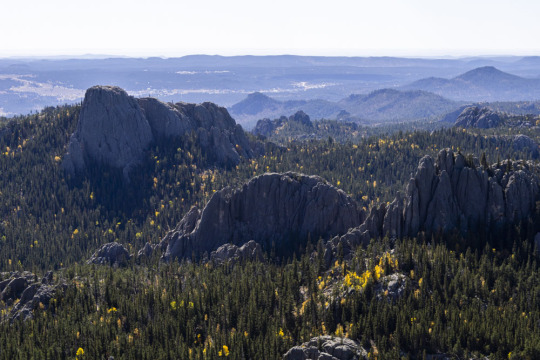
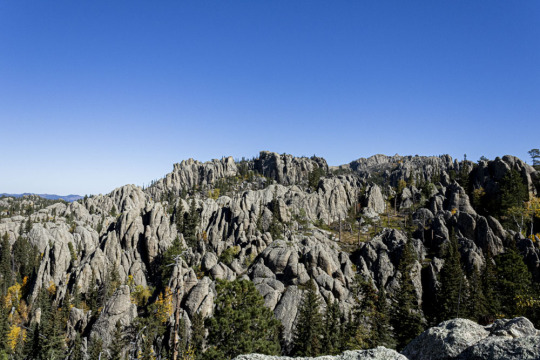

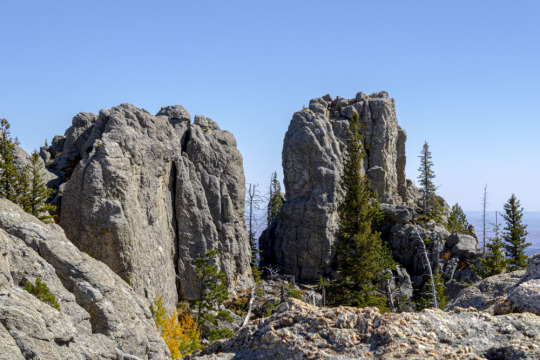
Nicholas Black Elk: Medicine Man, Missionary, Mystic
Author: Michael F. Steltenkamp
Book: 1/1
Genre: biography
Summary: Nicholas Black Elk: Medicine Man, Missionary, Mystic, tells the full interpretive story of Black Elk. Steltenkamp shows that Black Elk was not the native traditionalist others have depicted him to be, but rather a religious thinker with a positive outlook that merged Lakota ideas with Christianity. This text tells of Black Elk’s travels, visions, experience in the Battle of Little Big Horn, and the way he led his people along the path of God.
Review: I immediately pulled this book off the shelf when I saw it’s title. Quick fun fact: I attend school in the Black Hills area of South Dakota and I have personally hiked Black Elk Trail in Custer State Park. It is absolutely gorgeous. Since I have been in some of places that Black Elk has walked, I was eager to learn about his story. Steltenkamp’s telling of Black Elk’s story provided in-depth details, as well as parts of his story that many authors did not want to tell. Previous biographies about Black Elk only tell of his pre-Christian life while practicing Lakota traditions. However, Black Elk wanted his story as a missionary and his family’s involvement in their church to be told. Steltenkamp gives the reader the background of other authors’ stories and this lack of truly understanding Black Elk as a Christian. Steltenkamp fully immerses the reader into Black Elk’s life as a medicine man, heyoka, missionary, and an important figure in the church. This book contains lots of information, some parts more entertaining than others; I would recommend this book to anyone who loves history, non-fiction, and learning about other cultural experiences.
I included photos I took at Black Elk Peak, enjoy the view!
Rating: 5/5 stars ⭐️⭐️⭐️⭐️⭐️
Keep reading⛰
#nicholas black elk#black elk#Michael f Steltenkamp#Steltenkamp#black elk trail#black elk peak#custer state park#south dakota#black hills#native people#native culture#indigenous#native american#lakota#pine ridge reservation#oglala lakota#keep reading#bookguide#currently reading#new books#aesthetic#quotes#bibliophile#booklr#quoteoftheday#quotation#book blog#book summary#book review#bookish
10 notes
·
View notes
Text
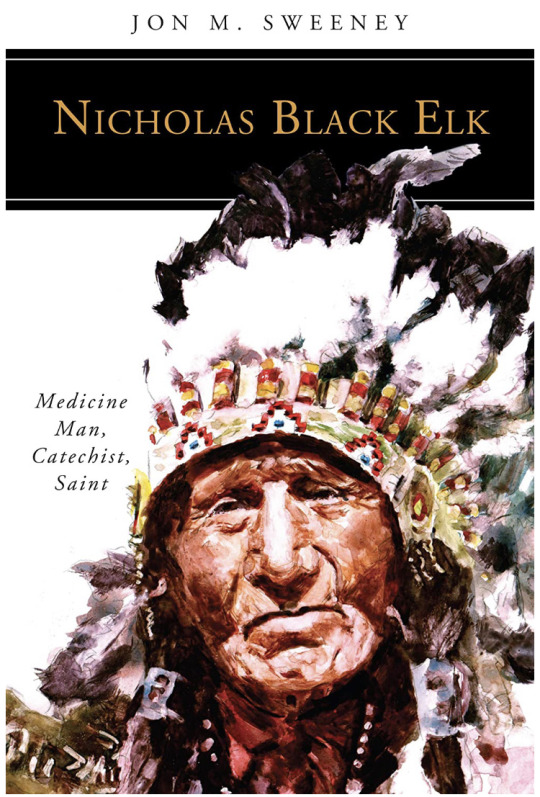
Servant of God Nicholas Black Elk's legacy is popularly celebrated for his fascinating spiritual life. How could one man, one deeply spiritual man, serve as both a traditional Oglala Lakota medicine man and a Roman Catholic catechist and mystic? How did these two spiritual and cultural identities enrich his prayer life? How did his commitment to God, understood through his Lakota and Catholic communities, shape his understanding of how to be in the world?
But, to fully understand the depth of Black Elk's life-long spiritual quest requires a deep appreciation of his life story. He witnessed devastation on the battlefields of Little Bighorn and the Massacre at Wounded Knee, but also extravagance while performing for Queen Victoria as a member of "Buffalo Bill" Cody's Wild West Show. Widowed by his first wife, he later shared a home with his second wife and their eight children. Black Elk's spiritual visions granted him wisdom and healing insight as a child, yet he grew progressively physically blind in his adult years. These stories, and countless more, offer insight into this extraordinary man whose cause for canonization is now underway at the Vatican.
3 notes
·
View notes
Text
Saints and Ecological Spirituality
The following list consists of saints and other prominent Catholics who are associated with nature or herbalism on some level. May be expanded upon in the future.
St. Francis of Assisi, patron of animals and nature, known for his liturgical chant “Canticle of the Sun,” starting the Franciscan Order, and for utilizing nature in his preaching, Italy
St. Kateri Tekakwitha, patroness of ecology, known for her devout faith in Jesus; would make crosses through out the woods she walked in to remember to pray, Mohawk-Iroquois
Servant of God Nicholas Black Elk, catechist and preacher, associated with indigenous Catholic worship and decolonization, Oglala Lakota
St. Fiacre, patron of gardening, a monk sought after by his community for his skills with herbs and healing, Ireland
St. Hildegard of Bingen, Benedictine nun and mystic, prolific writer of many subjects including herbal medicine and sought after for political advice, Germany
Servant of God Dorothy Day, activist and humanitarian, known for jump-starting Catholic social justice activism for many concerns including ecology, United States
St. Bibiana, virgin martyr who was persecuted along with her family during the Early Church, her grave was said to miraculously spring up herbs that cured ailments like hangovers and headaches, Rome
St. Martin de Porres, the first Black Dominican member originally apprenticed under a barber, and as a result also learned how to use healing herbs. He left the trade to become a monk and used his healing training to help the poor and service his brothers, Peru
#catholic#saints#st francis of assisi#st hildegard of bingen#st kateri tekakwitha#sog nicholas black elk#st fiacre#catholic herbalism#herbalism
123 notes
·
View notes
Text
I just realized another great thing about that Santa’s Origins post
Cause Conservatives can have a White Santa, or they can have a Christian Santa, but they can’t have both
#elk text#12th#December#2017#December 12th 2017#christmas tag#cause you get Odin who's a Norse God#or you get Saint Nicholas who was a Black Middle Eastern man
1 note
·
View note
Text
Walking the Red Road
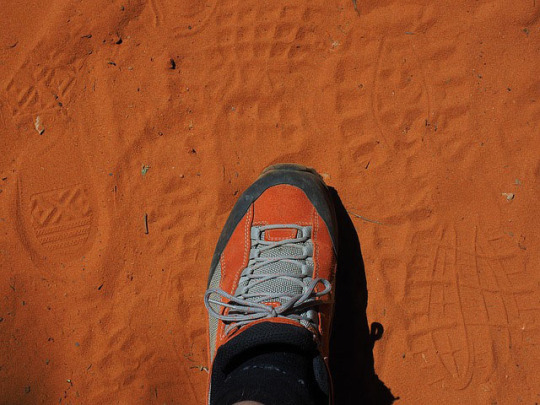
In John G. Neihardt’s book, Black Elk Speaks, Oglala Lakota holy man and visionary Nicholas Black Elk shares a great vision which came to him in the summer when he was nine years old and which guided him throughout his life. That vision was extremely rich in detail and symbolism, all of which became important to him in the years ahead, but one image which was revealed to him in his vision and informs the entire book is the image of two spiritual paths: the Red Road and the Black Road.
The Red Road or Chanku Luta, as it is known by the Lakota, is a metaphor for living a spiritual way of life. It is a unique spiritual path that runs north and south. The Red Road is a way of life and enlightenment which has no end. This road is described as narrow, winding and difficult to follow. During times of difficulty, the Lakota people could always rely upon the Red Road for strength and renewal, just as they could rely upon the Inipi, also known as the sweat lodge ceremony.
There is also a fearful black road of troubles and of war, which contrasts with a good red road of spiritual understanding. The Black Road or Chanku Sapa, which runs east and west, is a path of non-spirituality and self-centered greed. The two roads are said to cross in the center of the sacred hoop of the world, where the Tree of Life blooms. Walking the Red Road is a deep sense of obligation and a meaningful personal commitment to purposefully live your life each day, practicing and embodying the seven sacred virtues of the Lakota: prayer, honesty, humility, compassion, respect, generosity and wisdom.
16 notes
·
View notes
Text
#NICHOLAS BLACK ELK ..... ✊🏼✊🏼✊🏼
(Photo's courtesy of the Marquette University Archives)
The true ordeal of the Teton Lakota, the warrior tribe that whipped the U.S. Cavalry in several notable fights in the 1870s, began after the shooting stopped ......
Worse than the persistent hunger was the federal effort to “civilize” the Indians by stages into hat- and trouser-wearing farmers with one wife, Christian first names, fixed last names and children who learned English in school ...........
But the authorities had one aim above all others—to end the ancient practice of smoking a traditional pipe with a mixture of tobacco and the inner bark of the red willow before calling out to the ultimate power behind all things addressed by Lakota as Tunkashila ........
The Lakota resisted all of these changes but
clung to nothing more tenaciously than the pipe .......✊🏼
The Oglala holy man and healer known as Black Elk once said that Lakota used tunkashila, which means grandfather, as a sign of respect and intimacy ........
The word, with the accent on the second syllable, is not the name of God, who has no name in traditional Lakota religion but is simply described as Wakan Tanka, translated by convention into English as Great Spirit ........
But wakan is a heavily freighted word ......
It means spirit in the sense of immaterial, large, eternal and everywhere, but it also means ancient, unknowable, mysterious and powerful ........
Black Elk — 1863-1950
ONE OF THE MOST STUDIED AND WRITTEN ABOUT NATIVE AMERICANS ......
BLACK ELK WAS AN OGLALA LAKOTA HOLY MAN ......
His story was first told in John Neihardt’s Black Elk Speaks, a book-length poem published in 1932 .....
Neihardt tells Black Elk’s story from his childhood through the 1890s.
Black Elk claims to have been at the Battle of the Little Bighorn. His story tells of the time after the battle when his people were forced to live on reservations, the impoverishment and what it was like living as prisoners on their own land .....
He describes the brief period of hope when the Ghost Dance religion emerged before the massacre at Wounded Knee.
In 1886 Black Elk joined Buffalo Bill Cody’s Wild West Show and toured eastern cities and even Europe.
His life after 1900 is recounted by Michael Steltenkamp’s Black Elk: Holy Man of the Oglala. Steltenkamp, a Jesuit, says that Black Elk became a Catholic missionary .......
He says that Lucy Looks Twice, Black Elk’s daughter, told him of the conversion. She says that her father traveled with the Jesuits and helped convert Arapahoes, Winnebagos, Omahas and others ......
He even went on fundraising trips to eastern cities.
In later years he combined his missionary work with showmanship at various tourist attractions in South Dakota, using his reputation as a Lakota holy man to draw visitors ......
Steltenkamp says Black Elk found no contradiction in his traditional Lakota religion and Catholicism .....
Black Elk died in 1950 on a night when the Pine Ridge area experienced a meteor shower. Black Elk made a prediction earlier in his life that lights in the sky would accompany his death .........
Heȟáka Sápa, commonly known as Black Elk (December 1, 1863 – August 19, 1959), was a wičháša wakȟáŋ ("medicine man, holy man") and heyoka of the Oglala Lakota people ........
He was a second cousin of the war leader " Crazy Horse " ......
Black Elk
Heȟáka Sápa
Born1 December 1863
Little Powder River, Wyoming .......
Died19 August 1950 (aged 86) ......
Pine Ridge, South Dakota .......
Resting place : Saint Agnes Catholic Cemetery, Manderson, South Dakota .....
Black Elk's first wife Katie converted to Roman Catholicism, and they had their three children baptized as Catholics .......
After Katie's death, in 1904 Black Elk, then in his 40s, converted to Catholicism .....
He also became a catechist, teaching others about Christianity ......
. He married again and had more children with his second wife; they were also baptized and reared as Catholic ........
He said his children "had to live in this world."
In August 2016, the Roman Catholic Diocese of Rapid City opened an official cause for his beatification within the Roman Catholic Church ......
Black Elk is perhaps most well known for the books written about him by amateur ethnologist John Neihardt, whom he met near the end of his life ......
Neihardt wrote about Black Elk's religious views, visions, and events from his life. Neihardt published his book Black Elk Speaks in 1932 ......
. The words of Black Elk have since been published in numerous editions, most recently in 2008 .....
HIGHEST RESPECT AND HONOUR ¥ ✊🏼 ✊🏼 A'HO ✊🏼 ✊🏼
1 note
·
View note
Text

LAYER ONE: THE OUTSIDE.
name: Troy Michael Menceña
eye color: dark brown, almost black
hair style/color: shaved / kept very short, dark brown/black
height: 6′
clothing style: Street casual, jeans, converse, hoodies, tshirts, etc.
best physical feature: back and shoulder muscles, hands and wrists, his smile
LAYER TWO: THE INSIDE
your fears: losing or hurting someone close to him, pelicans, motorcycles
your guilty pleasure: fireworks, cooking large birds and eating them with bare hands, cute girls, poptarts, very very sugary foods/desserts, cigarettes, weed weed weed
your ambitions for the future: atonement / forgiveness for what he’s done, making sure his mom is taken care of, have a family of his own, kick Jayson’s ass (again), see Myles happy again
LAYER THREE: THOUGHTS
your first thoughts waking up: ‘bathroom’ or ‘i wonder if that cute girl is still working at the Starbucks near work’ or ‘where dem boys at’, will i talk today? nope.
what you think about most: Nicholas. also: ‘do I have to talk to this [person] or can I message Myles to do it for me? I’m going to message Myles-’, are they staring at my scars or how tall I am? pls don’t look at my scars
what you think about before bed: Nicholas. how to stop thinking about Nicholas. can he finally talk to the girl at the Starbucks or will he awkwardly stand there with his cup of sugar with a hint of coffee again hoping she understands ASL or Spanish and he knows damn well she doesn’t. god i miss Nicholas
you think your best quality is: arms, shoots mad hoops, can cook a mean spaghetti, good hands for... things (wink wonk)
WHAT’S BETTER?
single or group dates: Single
to be loved or respected: loved (preferably both but you know)
beauty or brains: Brains because beauty fades and he’s got enough looks for the both of them, but they both can’t be stupid so
dogs or cats: dogs, but he attracts cats
LAYER FIVE: DO YOU…
lie: by omission, but very rarely.
believe in yourself: enough to get by
believe in love: Absolutely
want someone: Complicated answer, but yes, though he thinks he had his someone and now he simply bides his time until he can be with him again.
LAYER SIX: EVER BEEN…
been on stage: in high school
done drugs: Yes (you can hear him laughing to himself because yeah he has)
changed who you were to fit in: no.
LAYER SEVEN: FAVORITES
favorite color: teal, yellows and reds
favorite animal: he thinks dragons are pretty cool, or elk. bears. dogs. wolves, sharks
favorite movie: he doesn’t watch a lot of movies, but he likes action movies. probably got really into the Fast & Furious films for a while.
favorite game: used to be a COD bro, but DDR took over his life for a while in HS. Probably played League of Legends for a while and will check in on his Animal Crossing town every now and then just to maintain it. Nicholas got him into it so... he keeps it around.
LAYER EIGHT: AGE
day your next birthday will be: September 5th
how old will you be: the big 30
age you lost your virginity: 16
does age matter: yes, don’t be a creep my man.
LAYER NINE: IN A PERSON
best personality: Understanding
best eye color: all eyes are created equal (hazel)
best hair color: all hair is created equal (dark hair)
best thing to do with a partner: the devil’s tango, carnivals/amusement parks, ice cream in the park, workout together, literally anything because they are your partner and everything you do together is the best
LAYER TEN: FINISH THE SENTENCE
i love: [watching the sunrise or trying to find where the moon is when the sun is starting to set. First one to find it doesn’t have to pay for dinner.]
i feel: [lost.]
i hide: [my scars.]
i miss: [the smell of lavenders.]
i wish: [I could take it back.]
Tagged by: @carnivorarium
Tagging: @matteblackstars / and literally everyone else who would bother reading this
#;; we've all done this before (dash games)#pending Troy tag#this gets like...#progressively sadder as it goes down#;; an open book with ripped out pages (Troy About)
4 notes
·
View notes
Photo

Remembering Lhasa de Sela
By Fred Goodman
The singular, otherworldly American singer Lhasa de Sela—who wrote and recorded in Spanish, French, and English and performed songs in nearly a dozen other languages—would have turned forty-seven on September 27. A spiritual and artistic pilgrim, she possessed an insatiable hunger for knowledge and left behind a musical legacy culled from her unique affinity for the romantic, mystic, and cerebral.
Beginning with her first album in 1997, Lhasa’s multilingual songs and her spellbinding shows made the singer-songwriter a sensation in Montreal and Europe. But even today, nearly ten years after her death, her work and individuality have yet to register with listeners in her homeland. Contradictory and complex, Lhasa was both a naïf and a melancholic, a pixie with an enduring apprehension of life’s hardships as well as its magic. In the course of a heartbreakingly brief career of just thirteen years and three albums, she worked her own musical turf, part Edith Piaf, part Tinkerbell.
She came by her artistic and spiritual wanderlust honestly. Raised in a family of bohemian nomads, Lhasa was born in an unused Catskills Mountains ski chalet in Big Indian, New York, twenty-five miles northwest of Woodstock. The attending hippie doctor, shirtless and in overalls, focused most of his medical supervision on splitting a gallon of Gallo burgundy with the expectant mother. Beautiful and healthy, the as-yet unnamed baby was wrapped in a blanket; with no cradle to hand, she slept in a dresser drawer.
Her peripatetic life began just a few days later, when the family was kicked out of Big Indian and set off for Mexico. But it wasn’t until five months later that her parents finally found a name they felt suited their new daughter. Having read Timothy Leary’s popular handbook on LSD, The Psychedelic Experience: A Manual Based on the Tibetan Book of the Dead, the couple then tackled the original Buddhist tome that had inspired Leary. Along with providing a spiritual guide to navigating bardo, the state in which a Buddhist’s consciousness sits suspended between death and rebirth, the book told of the holy city of Lhasa, built high on the Tibetan plateau. The name means “place of the gods,” and somehow, those rarified heights and aspirations felt like an appropriate christening and wish.
“They were incapable of having a middle-class life,” Lhasa de Sela would say years later when asked about her mother and father. “Their parents were well-off, but they were the black sheep of their families. They took a lot of hallucinogenic drugs and took incredible risks.”
Raised in a converted school bus crossing back and forth between Mexico and the United States, Lhasa and her three sisters were homeschooled and grew up without a telephone or television. And while their parents rejected the bulk of mainstream America’s material and social assumptions, they were fierce about instilling in their children an unquenchable curiosity, a deep devotion to spiritual and intellectual advancement, and the veneration of creativity.
“What was really passed to us in the way we were raised is that life is an interior search,” says her sister Miriam. “A lot of soul-searching and trying to be truthful to your intuition. And in a very vague way trying to trust something that’s invisible. I would have to say that was a huge part of Lhasa’s life: constant self-searching.” That spiritual and intellectual search would, in turn, illuminate her writings and performances.
An exhilarating childhood, it was also a life of uncertainty, isolated and lived without nets. The month that Lhasa turned eight, she was living in a broken-down bus behind an Exxon station in Elk Grove, California. Her father was picking melons by day and rebuilding a replacement engine salvaged from a junkyard by night; Lhasa and her sisters studied with their mother in the mornings and worked gathering tomatoes in the afternoons. On her birthday, there was a Raggedy Ann party in the bus; Lhasa’s mother made a doll, her sisters crafted a piñata, and friends provided a Raggedy Ann cake. As an adult, Lhasa would tag it her most memorable birthday.
Though lived close to the bone, that unorthodox upbringing proved a petri dish for nurturing a family of extraordinarily focused iconoclasts and autodidacts. Lhasa’s sisters would go on to careers as circus performers—a tightrope walker, a trapeze artist, and a gymnast—with Lhasa at one point taking a break from her own career to join their circus troupe in France. A loner at heart, Lhasa would always remain somewhat estranged from society at large; her unusual upbringing and the lessons imparted by her parents—particularly, that life is an adventure not to be missed—left her unable to fathom the lack of curiosity and discipline in so many of the people she met. “She kind of fit in everywhere but also nowhere,” says her half-brother, Mischa Karam.
At the age of twelve, Lhasa heard Billie Holiday for the first time and became obsessed with transforming herself into a singer. A move at nineteen to Montreal, with its thriving dual French and English music scenes, broadened her perspective. Lhasa’s unique ability to incorporate whatever came her way, forged in that unlikely, supercharged childhood, would lead her as a musician to make use of anything she deemed moving and meaningful, from Gypsy music to Mexican rancheras, Americana, jazz and fado, chanson française and South American folk melodies. She had an eye for the authentic, an unfailing ear for the heartfelt.
Though she was likely this country’s first world music chanteuse, Lhasa nonetheless remains virtually unknown in the United States. In recent years, reggaetón and Spanglish pop hits such as “Despacito” have worked their way into America’s pop lexicon, but that wasn’t the case twenty-odd years ago, when Lhasa released her first album, the all-Spanish La Llorona. A musical séance calling up ghosts from a long-lost world of legend and romance, the album became a bestseller in Canada and made her a star in France and much of Europe but never registered here. Her trilingual second album, The Living Road, was one of the United Kingdom’s most critically lauded albums of 2003, and critics there acclaimed Lhasa “a multilingual global diva.” Her continuing American anonymity feels inexplicable. “The language really did not make any difference,” observed the Canadian music journalist Nicholas Jennings. “What she was putting forth transcended language, she was such an intense performer. She had all the depth of emotion of an actress or an opera singer. You couldn’t take your eyes off her.”
As ambitious as she was artistic, Lhasa had set her eyes on conquering the United States. She didn’t imagine her time was running short. Diagnosed with breast cancer in 2008, Lhasa nonetheless continued to plot an American tour while writing and recording her only all-English album, 2009’s Lhasa. But for Lhasa, America would prove a dream that has yet to come to fruition: she died at her home in Montreal on New Year’s Day, 2010, at the age of thirty-seven.
About the author: Fred Goodman is a former editor at Rolling Stone whose work has appeared in the New York Times and many magazines. His previous books include the award-winning The Mansion on the Hill: Dylan, Young, Geffen, Springsteen, and the Head-on Collision of Rock and Commerce.
Spotify Playlist | YouTube Playlist
3 notes
·
View notes
Photo

Happy Indigenous People’s Day. I’ve never done much to commemorate this holiday. That can change. This year, while reading up on the creation stories and afterlives of multiple belief systems, my co-worker introduced me to the “Black Elk Speaks”. It’s a collection of dictations by the Ogala Lakota religious elder, Nicholas Black Elk, recorded by John Neihardt. . I’m posting the section with which I’m most familiar: The recitation of the Great Vision of the cosmology of the universe. On the small scale, it contains cultural associations and symbolism unfamiliar to me I was not familiar: Red, as “…the color of good and of plenty…” (124), the significance of cardinal directions. I lost track of who transforms into what. It’s also elegiac. The books was published in 1932, but the two sections in the PDF come from two moments in his life. Age four, when he describes wasichus (in this case, “white colonists”, but the term has broader meaning) making treaties with the Ogala chief, Red Cloud, to guarantee the land as theirs. The next section, at age nine, he describes wasichus setting down railroads that “…had cut the bison herd in two, but those that stayed in our country with us were more than could be counted, and we wandered without trouble in our land.” . Just now, I started looking more up on Black Elk, Neihardt, and the book and discovered that Black Elk is actually up for canonization by the Catholic Church. I’m unfamiliar with this part of his life and would like to know more. I hope that this reading inspires you to learn more, as well! . If anyone notices any unfortunate phrasing or complete ignorance on my part, please let me know so that I can correct it! . #indigenouspeoplesday #ogala #lakota #nicholasblackelk https://www.instagram.com/p/CU5URpYLKtB/?utm_medium=tumblr
0 notes